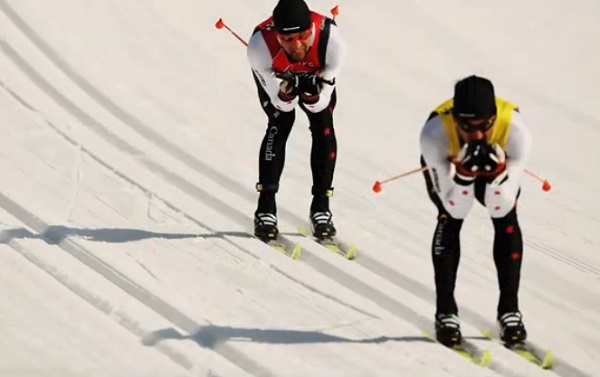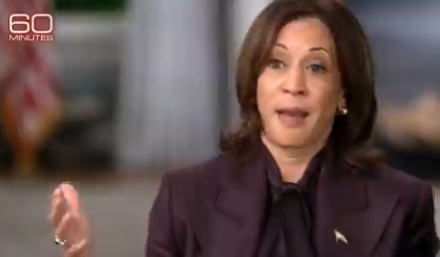Alberta
Investigation concludes police shooting of suspect holding gun a reasonable use of force

From the Alberta Serious Incident Response Team
RCMP used reasonable force during serious injury incident
On April 29, 2019, the Alberta Serious Incident Response Team (ASIRT) was directed to investigate the circumstances surrounding injuries sustained by a 33-year-old man during his arrest by members of the Lloydminster RCMP that same date.
On that date, members of the Lloydminster RCMP observed a male driver operating a stolen Dodge Ram 2500 truck within Lloydminster city limits. The truck had been stolen earlier that day during a break and enter at a local vehicle repair shop. Video footage from the repair shop depicted the 33-year-old man as the individual responsible for the break and enter, and at the time, the man was also under investigation in relation to a homicide that had occurred on April 27, 2019.
Police attempted to conduct a traffic stop on the stolen truck, but the truck fled. Officers elected not to pursue the vehicle; however, the vehicle was known to have engine problems and was not expected to be drivable for long. A short time later, two police officers observed the stolen truck in an industrial area of the city. In order to avoid a pursuit, both officers followed the truck from a distance until they observed plumes of smoke emanating from the truck, leading them to believe that the vehicle’s engine had failed.
The two officers stopped their fully marked police vehicles in front of and behind the truck, blocking its path. The man exited the driver’s side door of the truck and fled on foot toward the rear of the truck and into a fenced compound. One of the police officers pursued the man on foot while the second ensured the stolen truck was empty before joining the foot pursuit a short distance behind. As the first officer ran, he called out to the man by name, advising him that he was under arrest. The man continued to run, but soon lost his footing and stumbled on the gravel. The officer drew his conducted energy weapon (CEW) and issued a verbal command for the man to stay down. When the man rose to his feet and began running again, both officers observed a black handgun in the man’s right hand. The first officer radioed that the man had a gun, then drew his service pistol from its holster and issued repeated verbal commands for the man to drop the gun. The man continued running and, as he rounded the corner of a building, he pointed the handgun at the pursuing officer, who then fired his service pistol.
After the officer fired, the man ran behind a parked Volkswagen Jetta. As he turned to get behind the Jetta, still holding the gun in his right hand, the officer fired again. The man ducked behind the car as the officer fired at him through the window of the parked Jetta. The second officer described the man’s actions as a tactical movement to use the vehicle as cover, and after the first officer fired, the man crouched down behind the vehicle. As both officers shouted repeated verbal commands for the man to drop the firearm, the man rose and lifted his firearm. At that moment, the officer fired again – this time striking the man, who fell to the ground, still holding the handgun. Following repeated verbal commands, the man eventually pushed the gun away and rolled over, at which time the second officer placed him in handcuffs.
With the man now in handcuffs, the first officer placed pressure on his wound while the second officer retrieved a first aid kit from the police vehicle. The two officers administered first aid to the man until he was transported by EMS to hospital, where it was confirmed that he had sustained a single penetrating gunshot wound to his left shoulder.
A loaded semi-automatic .22-calibre handgun was recovered from the incident scene, along with other items associated with both the man and the owner of the stolen vehicle. An image of the recovered firearm is not being released at this time, as it relates to a matter that remains before the courts.
Physical and video evidence confirm that five shots were fired during the incident by the first police officer, with approximately 22 seconds elapsing between the first shot and the final shot. Video evidence confirms the placement of the two officers matches the description in their statements, and civilian witness evidence confirms that the man retained possession of the firearm up until the officer’s final shot.
Under Section 25 of the Criminal Code, a police officer is authorized to use as much force as is necessary in order to carry out their lawful duties. In this case, the evidence conclusively establishes that both police officers were on duty, were operating marked RCMP vehicles, and were attired in RCMP uniforms. At the time of the incident, the man was subject to lawful arrest for both the theft and possession of the stolen truck, as well as the flight from police that preceded the incident. In addition to those grounds for arrest, the officer who fired was also aware of the man’s involvement in a homicide incident several days prior, during which a firearm was used. The officer’s knowledge of the man’s involvement and the nature of that incident reasonably elevated the officer’s risk assessment of the situation.
During his interview, the man denied any intention to harm police; however, it is clear from the evidence that throughout the incident he repeatedly refused to follow verbal commands and maintained possession of a firearm until after the officer’s final shot. The man’s actions during the incident, combined with the information available to the officer, were more than sufficient to establish an objectively reasonable fear of death or grievous bodily harm on the part of the officer, and to justify a use of force proportionate to that threat.
While the man sustained an injury during the arrest, his actions gave the officer reasonable cause to believe that his life was endangered; therefore, the force that he used to address that danger was also reasonable. Accordingly, there are no grounds to believe that an offence was committed by any police officer, and no charges will be laid.
ASIRT’s mandate is to effectively, independently and objectively investigate incidents involving Alberta’s police that have resulted in serious injury or death to any person.
Alberta
COWBOY UP! Pierre Poilievre Promises to Fight for Oil and Gas, a Stronger Military and the Interests of Western Canada

Fr0m Energy Now
As Calgarians take a break from the incessant news of tariff threat deadlines and global economic challenges to celebrate the annual Stampede, Conservative party leader Pierre Poilievre gave them even more to celebrate.
Poilievre returned to Calgary, his hometown, to outline his plan to amplify the legitimate demands of Western Canada and not only fight for oil and gas, but also fight for the interests of farmers, for low taxes, for decentralization, a stronger military and a smaller federal government.
Speaking at the annual Conservative party BBQ at Heritage Park in Calgary (a place Poilievre often visited on school trips growing up), he was reminded of the challenges his family experienced during the years when Trudeau senior was Prime Minister and the disastrous effect of his economic policies.
“I was born in ’79,” Poilievre said. “and only a few years later, Pierre Elliott Trudeau would attack our province with the National Energy Program. There are still a few that remember it. At the same time, he hammered the entire country with money printing deficits that gave us the worst inflation and interest rates in our history. Our family actually lost our home, and we had to scrimp and save and get help from extended family in order to get our little place in Shaughnessy, which my mother still lives in.”
This very personal story resonated with many in the crowd who are now experiencing an affordability crisis that leaves families struggling and young adults unable to afford their first house or condo. Poilievre said that the experience was a powerful motivator for his entry into politics. He wasted no time in proposing a solution – build alliances with other provinces with mutual interests, and he emphasized the importance of advocating for provincial needs.
“Let’s build an alliance with British Columbians who want to ship liquefied natural gas out of the Pacific Coast to Asia, and with Saskatchewanians, Newfoundlanders and Labradorians who want to develop their oil and gas and aren’t interested in having anyone in Ottawa cap how much they can produce. Let’s build alliances with Manitobans who want to ship oil in the port of Churchill… with Quebec and other provinces that want to decentralize our country and get Ottawa out of our business so that provinces and people can make their own decisions.”
Poilievre heavily criticized the federal government’s spending and policies of the last decade, including the increase in government costs, and he highlighted the negative impact of those policies on economic stability and warned of the dangers of high inflation and debt. He advocated strongly for a free-market economy, advocating for less government intervention, where businesses compete to impress customers rather than impress politicians. He also addressed the decade-long practice of blocking and then subsidizing certain industries. Poilievre referred to a famous quote from Ronald Reagan as the modus operandi of the current federal regime.
“The Government’s view of the economy could be summed up in a few short phrases. If anything moves, tax it. If it keeps moving, regulate it. And if it stops moving, subsidize it.”
The practice of blocking and then subsidizing is merely a ploy to grab power, according to Poilievre, making industry far too reliant on government control.
“By blocking you from doing something and then making you ask the government to help you do it, it makes you reliant. It puts them at the center of all power, and that is their mission…a full government takeover of our economy. There’s a core difference between an economy controlled by the government and one controlled by the free market. Businesses have to clamour to please politicians and bureaucrats. In a free market (which we favour), businesses clamour to impress customers. The idea is to put people in charge of their economic lives by letting them have free exchange of work for wages, product for payment and investment for interest.”
Poilievre also said he plans to oppose any ban on gas-powered vehicles, saying, “You should be in the driver’s seat and have the freedom to decide.” This is in reference to the Trudeau-era plan to ban the sale of gas-powered cars by 2035, which the Carney government has said they have no intention to change, even though automakers are indicating that the targets cannot be met. He also intends to oppose the Industrial Carbon tax, Bill C-69 the Impact Assessment Act, Bill C-48 the Oil tanker ban, the proposed emissions cap which will cap energy production, as well as the single-use plastics ban and Bill C-11, also known as the Online Streaming Act and the proposed “Online Harms Act,” also known as Bill C-63. Poilievre closed with rallying thoughts that had a distinctive Western flavour.
“Fighting for these values is never easy. Change, as we’ve seen, is not easy. Nothing worth doing is easy… Making Alberta was hard. Making Canada, the country we love, was even harder. But we don’t back down, and we don’t run away. When things get hard, we dust ourselves off, we get back in the saddle, and we gallop forward to the fight.”
Cowboy up, Mr. Poilievre.
Maureen McCall is an energy professional who writes on issues affecting the energy industry.
Alberta
Alberta and Ontario sign agreements to drive oil and gas pipelines, energy corridors, and repeal investment blocking federal policies

Alberta-Ontario MOUs fuel more pipelines and trade
Alberta Premier Danielle Smith and Ontario Premier Doug Ford have signed two memorandums of understanding (MOUs) during Premier Ford’s visit to the Calgary Stampede, outlining their commitment to strengthen interprovincial trade, drive major infrastructure development, and grow Canada’s global competitiveness by building new pipelines, rail lines and other energy and trade infrastructure.
The two provinces agree on the need for the federal government to address the underlying conditions that have harmed the energy industry in Canada. This includes significantly amending or repealing the Impact Assessment Act, as well as repealing the Oil Tanker Moratorium Act, Clean Electricity Regulations, the Oil and Gas Sector Greenhouse Gas Emissions Cap, and all other federal initiatives that discriminately impact the energy sector, as well as sectors such as mining and manufacturing. Taking action will ensure Alberta and Ontario can attract the investment and project partners needed to get shovels in the ground, grow industries and create jobs.
The first MOU focuses on developing strategic trade corridors and energy infrastructure to connect Alberta and Ontario’s oil, gas and critical minerals to global markets. This includes support for new oil and gas pipeline projects, enhanced rail and port infrastructure at sites in James Bay and southern Ontario, as well as end-to-end supply chain development for refining and processing of Alberta’s energy exports. The two provinces will also collaborate on nuclear energy development to help meet growing electricity demands while ensuring reliable and affordable power.
The second MOU outlines Alberta’s commitment to explore prioritizing made-in-Canada vehicle purchases for its government fleet. It also includes a joint commitment to reduce barriers and improve the interprovincial trade of liquor products.
“Alberta and Ontario are joining forces to get shovels in the ground and resources to market. These MOUs are about building pipelines and boosting trade that connects Canadian energy and products to the world, while advocating for the right conditions to get it done. Government must get out of the way, partner with industry and support the projects this country needs to grow. I look forward to working with Premier Doug Ford to unleash the full potential of our economy and build the future that people across Alberta and across the country have been waiting far too long for.”
“In the face of President Trump’s tariffs and ongoing economic uncertainty, Canadians need to work together to build the infrastructure that will diversify our trading partners and end our dependence on the United States. By building pipelines, rail lines and the energy and trade infrastructure that connects our country, we will build a more competitive, more resilient and more self-reliant economy and country. Together, we are building the infrastructure we need to protect Canada, our workers, businesses and communities. Let’s build Canada.”
These agreements build on Alberta and Ontario’s shared commitment to free enterprise, economic growth and nation-building. The provinces will continue engaging with Indigenous partners, industry and other governments to move key projects forward.
“Never before has it been more important for Canada to unite on developing energy infrastructure. Alberta’s oil, natural gas, and know-how will allow Canada to be an energy superpower and that will make all Canadians more prosperous. To do so, we need to continue these important energy infrastructure discussions and have more agreements like this one with Ontario.”
“These MOUs with Ontario build on the work Alberta has already done with Saskatchewan, Manitoba, Northwest Territories and the Port of Prince Rupert. We’re proving that by working together, we can get pipelines built, open new rail and port routes, and break down the barriers that hold back opportunities in Canada.”
“Canada’s economy has an opportunity to become stronger thanks to leadership and steps taken by provincial governments like Alberta and Ontario. Removing interprovincial trade barriers, increasing labour mobility and attracting investment are absolutely crucial to Canada’s future economic prosperity.”
Together, Alberta and Ontario are demonstrating the shared benefits and opportunities that result from collaborative partnerships, and what it takes to keep Canada competitive in a changing world.
Quick facts
- Steering committees with Alberta and Ontario government officials will be struck to facilitate work and cooperation under the agreements.
- Alberta and Ontario will work collaboratively to launch a preliminary joint feasibility study in 2025 to help move private sector led investments in rail, pipeline(s) and port(s) projects forward.
- These latest agreements follow an earlier MOU Premiers Danielle Smith and Doug Ford signed on June 1, 2025, to open up trade between the provinces and advance shared priorities within the Canadian federation.
Related information
-

 Alberta2 days ago
Alberta2 days agoAlberta Next: Immigration
-

 COVID-191 day ago
COVID-191 day agoFDA requires new warning on mRNA COVID shots due to heart damage in young men
-

 Alberta Sports Hall of Fame and Museum2 days ago
Alberta Sports Hall of Fame and Museum2 days agoAlberta Sports Hall of Fame 2025 Inductee Profiles – Para Nordic Skiing – Brian and Robin McKeever
-

 Crime1 day ago
Crime1 day agoNews Jeffrey Epstein did not have a client list, nor did he kill himself, Trump DOJ, FBI claim
-

 Business1 day ago
Business1 day agoCarney’s new agenda faces old Canadian problems
-

 International16 hours ago
International16 hours agoChicago suburb purchases childhood home of Pope Leo XIV
-

 Daily Caller15 hours ago
Daily Caller15 hours agoBlackouts Coming If America Continues With Biden-Era Green Frenzy, Trump Admin Warns
-

 Daily Caller15 hours ago
Daily Caller15 hours ago‘I Know How These People Operate’: Fmr CIA Officer Calls BS On FBI’s New Epstein Intel






